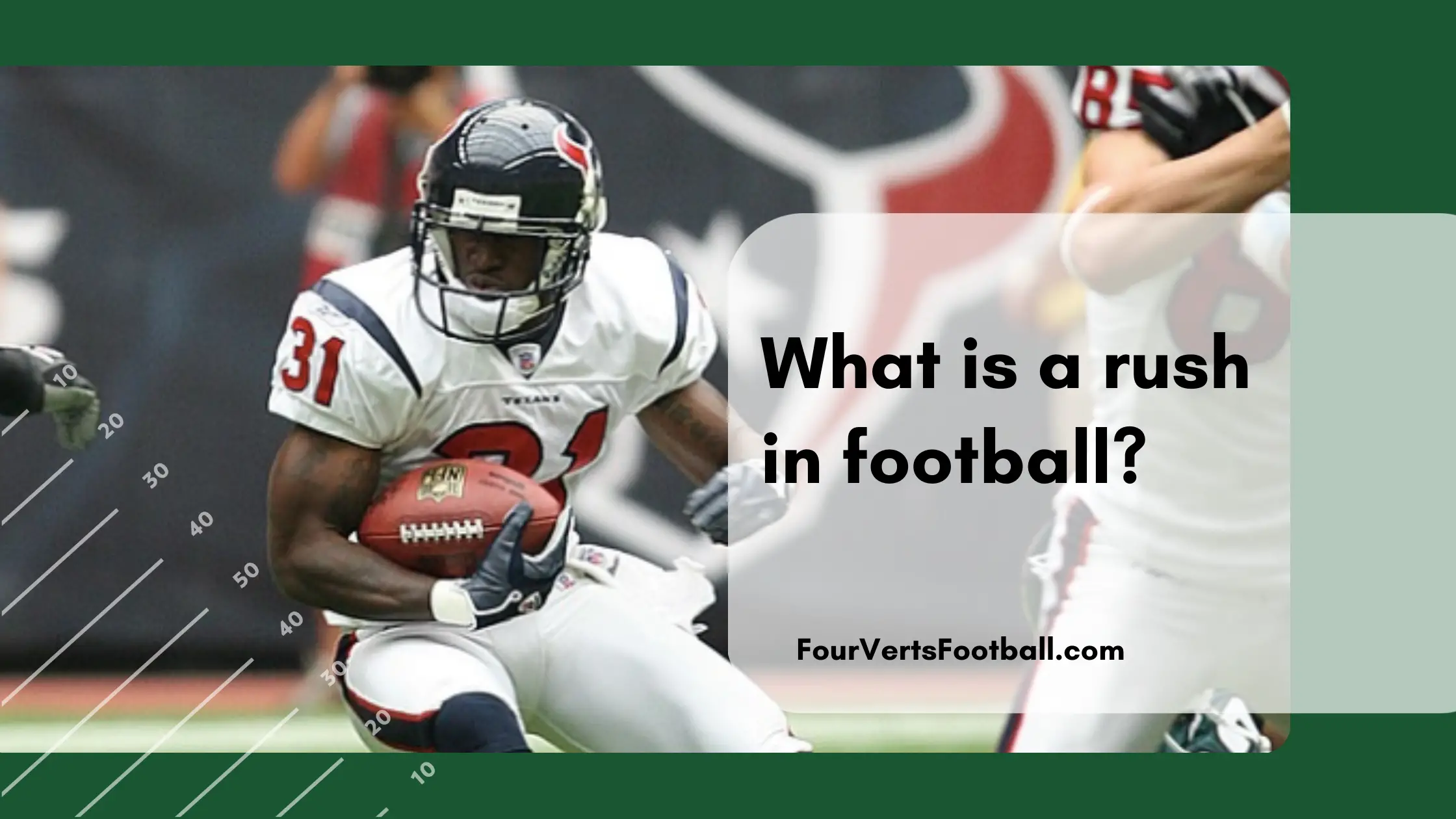A rush in football is a play in which the offense attempts to move the ball by running with it instead of passing it. Rushes are a statistic kept to record the number of times a team or player rushed the ball.
If a running back was handed the ball five times during the game this means he rushed the ball five times or has five rushes.
How To Rush The Ball
There are three seperate ways in which a team may rush the football. The first and most common way to run the ball is with a handoff.
A handoff consists of the quarterback getting the ball via the snap and then handing it to another offensive player. After receiving the handoff the player will run with the ball and try to advance it towards the other teams endzone.
A rush can also occur via a lateral toss. On these plays, the quarterback gets the ball from the snap and then throws the ball backwards to a teammate. Since the ball travelled backward and not forward this play is considered lateral and not a forward pass.
Once catching the backwards pass the offensive player will run forward with the ball.
The final way in which a team may rush the ball is via the quarterback. Whether planned or not at any point during a play the quarterback may decide to run forward with the ball.
Once the quarterback crosses the line of scrimmage he can no longer throw the ball. Once the referees identify the quarterback has established himself as a runner the play will be counted as a rush.
Pros
Low Risk
One of the best aspects of rushing the football is that is presents almost no risk. When passing the ball there are several aspects of the play that can have a negative effect on your team.
For example, when passing a quarterback may take a sack losing a large number of yards. Travelling backwards on a rush does happen but it is usually for only a loss of one or two yards.
Additionally, passing plays are much more likely to cause to turnover. Interceptions are fairly common on throwing plays. When rushing the ball the only turnover that can occur is a fumble.
These do happen from time to time but they are less common than interceptions. This is why teams will often elect to run the ball when they cannot afford a turnover.
Great For Short Yardage
Another benefit of rushing plays is that they are great for short yardage. When rushing the ball you will almost always pick up a few yards.
Though these plays are not as likely to go for a long touchdown as a pass they are more reliable for picking up a few yards.
This is why you will often see rushes near the goal line and on short-yardage conversions.
Cons
Few Splash Plays
One negative aspect of running the ball is that you are much less likely to have a big play. Despite the low risks of rushing the ball you will find that this type of play is less likely to result in a large gain of yards.
This results in running plays being significantly slower than passing plays in terms of getting down the field.
This is why teams will rarely run the ball when it comes to the two minute drill.
Tough To Convert Long Downs
Another negative aspect of rushing plays is that they can rarely be relied on to pick up even intermediate amounts of yardage. When a third and long arises it is almost a guarantee that the offense will throw the ball.
This is because even a third and five is not short enough distance that you can reliably expect a rushing play to pick up the yardage.
That’s all on rushes in football learn more about statistics such as rushing yards in football.

